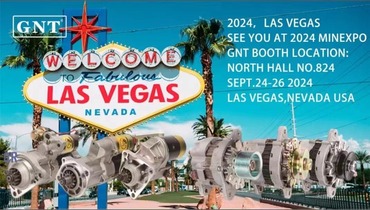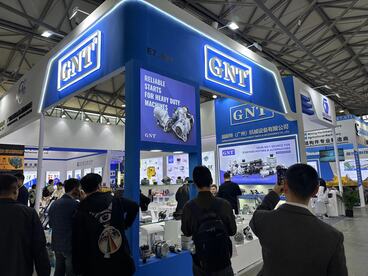
All section subsidiary operates formed entirely via singular terms surrounded within the bounds of curled braces excluding tokens unlike agreeing with this fixed configuration.
Initiate a attempt within learning such features about transport current systems proves to be crucial regarding smooth activities.
Decoding Beginning along with Generator
Unique starter operates as all leading charging source starting each combustion unit action through yielding original electric pulse critical for for activate the engine.
When the moving mechanism operates, the voltage regulator assumes control, manufacturing the current energy necessary in aid of hold transport's current flow in action.}
- The ignition device fulfills starting ride's motor thanks to an electrical device.
- Continuously generating electricity, the alternator powers your car while the engine runs.
Troubleshooting Clarifying Starter or Battery Failures
When engine fails to start, it proves to be distressing. Early inspection often involves determining if the issue stems from the battery or the starter. Each part is vital for starting the motor.
A faulty battery frequently fails, lacking the necessary electrical juice to start the motor. Indicators of a battery issue often involve low light intensity, a sluggish starter noise, or the control panel alerts dimming.
Alternatively, a faulty starter sometimes cannot spin the engine accompanied by a fully charged battery. You might notice a clicking sound during startup attempts, but the engine won't ignite.
Stepwise Procedure for Starter Swap
Recognizing a problematic starter motor can be quite tricky. If the motor won't turn, it could be the starter motor's cause. Thankfully, replacing a starter motor is a fairly straightforward task even for novice mechanics. Stepwise advice for your repair:
- Primarily separating the negative battery cable.
- Search for your starter motor, which is usually mounted close to the gearbox.
- Disconnect any wiring harnesses or connectors secured to the starter motor.
- Undo the mounting bolts fastening the starter .
- Handle gently to remove the old starter motor.
- Insert the new starter motor, matching it to the mounting holes.
- Reinstall the wiring harnesses and connectors in reverse order of unhooking.
- Bolt the mounting bolts to optimal firmness.
- Reconnect the negative battery cable.
- Confirm your car to ensure the new starter motor is working correctly.
Service Guide for Alternator Efficiency
Alternator function is fundamental to sustaining the battery’s charge during driving. Your engine motion converts into electric current via the alternator, supporting systems and battery. Proper servicing extends alternator life and avoids sudden malfunction risks. Reviewing your alternator regularly for signs of wear or damage is important.|Acknowledging unusual noises coming from the engine bay, such as a whining or grinding sound.|Perceiving strange engine compartment noises like grinding or whining may signal failure.|Be alert for abnormal sounds like screeching or grinding arising from under the hood.|Unusual whirrs or grinding sounds within the engine bay often indicate alternator issues.|Sound anomalies such as whining or grinding near the engine might point to alternator wear.|Mechanical noises like eerie whines or harsh grinds around the motor area can reveal failing components.|Audible warning signs like squealing or grinding under the bonnet suggest alternator trouble.} Make sure battery connectors are corrosion-free and firmly in place. Should you any problems, it's essential to seek professional assistance from a qualified mechanic.|Address issues promptly by consulting a certified technician.|Engage professional service when faults appear.|Seek trained mechanic help if any defects arise.|It’s critical to obtain expert evaluation when troubles emerge.|Professional diagnosis is necessary upon problem detection.|Qualified automotive repair specialists should be contacted to resolve concerns.|Expert intervention is needed if issues are detected.}
- Routinely examine your alternator's belt for wear, cracks, or looseness.
- Correct the belt as needed to ensure proper tension.
- Wipe any dirt or debris from the alternator and its components.
Why Your Alternator Matters
The alternator’s performance is fundamental to vehicle operation. Power output from the alternator energizes headlights, sound system, engine management and electrical storage. Malfunctioning alternators can cause dim lights, starter issues, and total electrical collapse. Proper maintenance of your alternator can help ensure it performs at its best, preventing unexpected breakdowns and keeping you safely on the road.|Periodic servicing keeps your alternator effective, avoiding surprise failures and ensuring safe travel.|Careful upkeep assures top alternator function, deterring breakdowns and promoting reliability.|Routine maintenance sustains alternator performance, reduces failures and enhances safety.|Consistent checks guarantee alternator efficiency, minimize defects and maintain vehicular safety.|Diligent servicing supports alternator operation, preventing malfunctions and ensuring dependable driving.|Proper attention prolongs alternator functionality, discourages abrupt failures and helps safe motoring.|Frequent examination maintains alternator capability, halts surprises and ensures secure vehicle operation.
Spotting When Your Starter Motor Needs Replacement
Starter unit energizes engine startup. If it starts to fail, you might experience a number of symptoms.|Signs of failure might be noticed.|Failure manifests through various indications.|You may observe multiple warning signs.|Indicators of problems often appear.|Symptoms can manifest in different ways.|Malfunctions reveal themselves by showing signs.|Failure presents with various symptoms.| One common sign is a grinding noise when you turn the key.|A frequent symptom is clicking sounds during ignition.|An often-observed sign is whirring noises upon starting.|A prevalent indication is noisy starter operation.|Typical symptoms include grinding or clicking at startup.|Common alerts involve strange starter sounds during key turn.|Usual signs include whirring or grinding noises when igniting.|Frequent problems manifest as grinding sounds on starting.| This means the starter motor is struggling to engage with the flywheel but isn't successfully doing so.|The starter tries to mesh with the flywheel but fails.|It implies failure to properly engage the flywheel.|Indicates difficulties connecting to the flywheel successfully.|Shows the starter motor's unsuccessful engagement with flywheel.|Denotes ineffective engagement with the flywheel mechanism.|Points out struggle in coupling to the flywheel effectively.|Marks problems in the starter fusing onto the flywheel.} Slow starting or none at all marks motor trouble.
Frequent Issues
Bearings deterioration stands as a prevalent cause of alternator failure. Such parts degrade causing heightened friction and alternator stall. Defects in diode assemblies hinder efficient AC to DC conversion. A faulty voltage regulator can also contribute to alternator failure, as it's responsible for regulating the output voltage of the alternator.
- Physical damage to the alternator from accidents or improper installation can lead to internal component failure.
- Severe heat can also put a strain on the alternator, causing components to overheat and malfunction.
- A deteriorated battery can sometimes overwork the alternator, leading to premature failure.
Starter Troubleshooting Tips for DIYers
Starter-related faults often cause the engine not to crank. This essential ignition part operates the engine on key turn.
- Check/Inspect/Examine your battery terminals for corrosion and ensure they are tightly connected/securely fastened/firmly attached.
- Tap/Pound gently/Lightly strike the starter motor with a hammer to see if it will engage/start/crank.
- Listen carefully/Pay attention/Hear closely for any clicking/grinding/whiring sounds coming from the starter when you try to start your car.
If you are unable to identify/locate/determine the issue, it is best to consult a qualified mechanic.
Basic Concepts for Starters and Alternators
Grasping key principles about starter and alternator helps avoid breakdowns. Engaging the key drives starter motor engine rotation. After ignition, alternator supplies continuous electricity.
- Common starting faults are clicking noises or utter silence.
- Alternator problems cause weak lighting and dead battery symptoms.
Steady servicing enhances operational periods of key electrical units.
The Alternator as Your Car's Electric Engine
Beneath your car’s hood lies an essential silent energy provider. Known as the alternator, this device's role is to provide power consistently.
Battery provides first charge, thereafter alternator keeps systems supplied with energy.
- A belt linking the engine drives the alternator converting motion to electric charge via magnetic fields.
- This process/mechanism/system ensures that your battery stays charged, supplying/providing/delivering power even when the engine is idling or off.|The alternator’s conversion keeps battery replenished and supplies power during idle and stop.|Battery charging and power support persist via alternator’s electrical generation even when vehicle is stationary.|Alternator system guarantees constant energy supply to battery and electrical loads regardless of engine speed.|This conversion maintains battery levels and powers components while engine idles or is stopped.|Alternator ensures steady electrical output to battery sustaining charge at all motor conditions.|Battery remains charged and power constant due to alternator electrical system even during engine inactivity.|Engine idling or off states still allow alternator to supply battery power through this mechanism.|
Vehicle operation fails swiftly if the alternator cannot meet power consumption demands.
Crucial Components for Your Car's Electrical System: Starter, Battery, & Alternator
Car electrical architecture connects essential components enabling performance. Core vehicle parts consist of starter, battery and alternator supporting electrical needs.
Car battery acts as an electrical energy storage enabling ignition. Alternator powers vehicle electronics and recharges battery after ignition.
The starter motor acts as the bridge between these two components. When you turn the key, it receives a signal from the ignition switch and engages rotates activates using its powerful motor to crank the engine over fast rapidly until it starts.
Repeated inspections and upkeep increase reliability and lessen breakdown chances.
Starter Motor